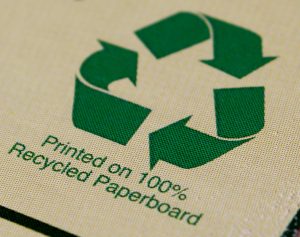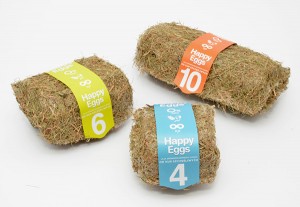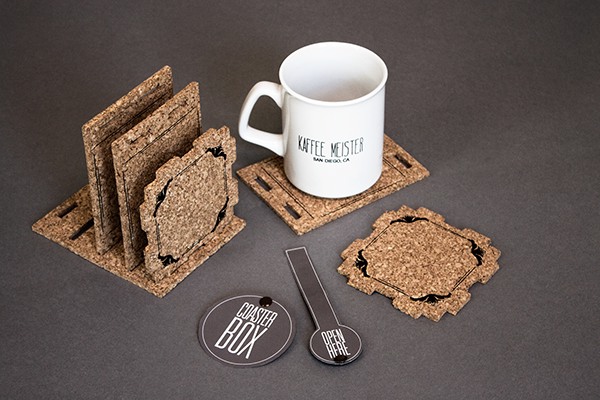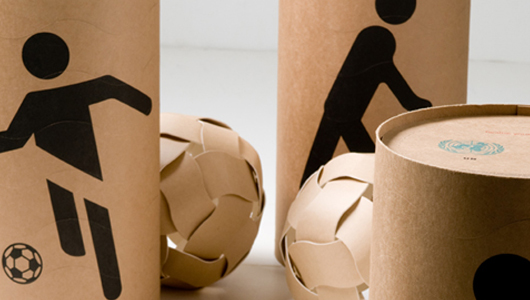Having recently celebrated Earth Day, we would like to offer our best tips for making your custom packaging more environmentally friendly. There are a few simple ways to reduce your negative impact on the environment through custom packaging. Some involve the design and construction of packaging products while others are dependent on the consumers and retailers who use them. Here are our five best strategies for making your packaging more eco-friendly:
1.Reduce Size, Minimize Waste

Designing custom packaging is a fun and creative experience, however it is easy to go overboard with design ideas and forget about the functionality and potential waste of the packaging. Reducing your packaging size just a small amount can save large amounts of materials and have a much smaller impact on the environment. Combat wasted materials by designing packaging products at the correct size needed for your products. Eliminate unnecessary add-ons and finishes that your packaging doesn’t need. The design of your packaging plays a big role in its efficiency, so if you have an agency or packaging designer make sure they know to minimize your design as much as possible. We know how important design and aesthetics are in custom packaging, so it’s important to approach this method tactfully and consider what is imperative to you and your company. Sometimes a simple design is all you need to convey your message to customers, and sometimes less really is more.
2. Recycled Materials
 Many packaging items are made from recycled materials as a way for factories to cut down on costs and wasted materials. Factories use two different types of recycled materials, post-consumer waste and post-industrial waste. Post-consumer waste includes materials that have been used and recycled by consumers. Post-industrial waste includes the leftover unused materials produced as a byproduct of manufacturing. Some types of packaging can easily be made with 100% recycled materials, although some of the more desirable and aesthetically pleasing options are made with lower percentages. A lot of packaging is made from completely virgin materials, however, which has a stronger negative impact on the environment. When looking to custom design packaging for your company, make sure to describe your interest in using recycled materials in your packaging. Looking to use 100% recycled materials may limit your design options, however it may be worth it to prevent waste. There are many beautiful and unique packaging options available that can be made with recycled content. And on that subject, new innovations are being made constantly to improve the quality and accessibility of recycled materials along with new material options that are more earth-friendly. For example, one innovative packaging designer created an egg carton made from heat-formed hay. Since hay is a quickly growing and renewable resource, it can be a natural and eco-friendly alternative to traditional packaging materials.
Many packaging items are made from recycled materials as a way for factories to cut down on costs and wasted materials. Factories use two different types of recycled materials, post-consumer waste and post-industrial waste. Post-consumer waste includes materials that have been used and recycled by consumers. Post-industrial waste includes the leftover unused materials produced as a byproduct of manufacturing. Some types of packaging can easily be made with 100% recycled materials, although some of the more desirable and aesthetically pleasing options are made with lower percentages. A lot of packaging is made from completely virgin materials, however, which has a stronger negative impact on the environment. When looking to custom design packaging for your company, make sure to describe your interest in using recycled materials in your packaging. Looking to use 100% recycled materials may limit your design options, however it may be worth it to prevent waste. There are many beautiful and unique packaging options available that can be made with recycled content. And on that subject, new innovations are being made constantly to improve the quality and accessibility of recycled materials along with new material options that are more earth-friendly. For example, one innovative packaging designer created an egg carton made from heat-formed hay. Since hay is a quickly growing and renewable resource, it can be a natural and eco-friendly alternative to traditional packaging materials.

Source: https://www.behance.net/gallery/Happy-Eggs/9367295
3. Encourage Customers to Reuse Packaging
 Reusable packaging has become increasingly popular in recent years, especially in grocery stores, large retailers, movie theaters, and specialty stores. Reusable packaging does cost more initially, but it serves as extended marketing for your business as well as helping to reduce environmental waste. Reusable bags can be made from many different materials, and in many shapes and sizes. Tote bags are the most popular option, however pouch bags, backpacks, and specialty bags are also common in custom packaging. Many jars, containers, and sturdy food takeout boxes can be reused by consumers as well. The most important part of this tactic is encouraging customers to reuse packaging rather than throwing it away. This can be achieved by designing packaging to be simple, aesthetically pleasing, and sturdy. Also having easily removable labels or embossed logos on your jars, boxes, and containers can make them more reuse-friendly. Another important use for reusable packaging is to replace plastic bags. With a growing number of cities enforcing plastic bag bans, retailers are looking to alternative styles of branded packaging. Many retailers face the choice of making customers pay for paper bags, or having to provide reusable bags to their customers. With these bans reducing the number of plastic and paper bags being made, reusable bags are the smart alternative. Bags, boxes, containers, and other branded packaging that can be reused prevents waste and has the benefit of also expanding your organic marketing reach.
Reusable packaging has become increasingly popular in recent years, especially in grocery stores, large retailers, movie theaters, and specialty stores. Reusable packaging does cost more initially, but it serves as extended marketing for your business as well as helping to reduce environmental waste. Reusable bags can be made from many different materials, and in many shapes and sizes. Tote bags are the most popular option, however pouch bags, backpacks, and specialty bags are also common in custom packaging. Many jars, containers, and sturdy food takeout boxes can be reused by consumers as well. The most important part of this tactic is encouraging customers to reuse packaging rather than throwing it away. This can be achieved by designing packaging to be simple, aesthetically pleasing, and sturdy. Also having easily removable labels or embossed logos on your jars, boxes, and containers can make them more reuse-friendly. Another important use for reusable packaging is to replace plastic bags. With a growing number of cities enforcing plastic bag bans, retailers are looking to alternative styles of branded packaging. Many retailers face the choice of making customers pay for paper bags, or having to provide reusable bags to their customers. With these bans reducing the number of plastic and paper bags being made, reusable bags are the smart alternative. Bags, boxes, containers, and other branded packaging that can be reused prevents waste and has the benefit of also expanding your organic marketing reach.
4. Recycle!
One of the more obvious ways to reduce environmental harm, is to recycle! The tricky part is knowing which materials are recyclable, which aren’t, and where to recycle them. Most plain paper bags can be recycled as is, however some bags and eurototes with lamination cannot be recycled. Furthermore, eurototes with ribbon or cotton handles may need to have the handles removed for recycling. Plastic bags are usually recyclable but depending where you live, they may need to be recycled at a specific location. Recycling packaging products is a great way to reduce the amount of non-biodegradable waste that ends up in landfills and oceans. Making recycling information and labels more clear on your packaging is a great way to remind customers to recycle and ensure that the products are recycled properly. When designing and creating your custom packaging, think about the materials you use and whether they will be easily recyclable for the end user. Make recycling information clear to the end user by printing symbols or recycling instructions directly onto the packaging. ![]() In addition to recycling, many packaging products are compostable, which means that they will break down into organic matter. Composting is an increasing practice as consumers want to help generate less waste and compost can be very useful to gardeners to make soil more fertile, control weeds, and reduce soil erosion. Biodegradable packaging will also break down over time, although there is a lot of debate over the time it takes for most packaging products to fully degrade. Before choosing biodegradable or compostable options, do some research on the time it takes for the materials to degrade, because it can take years for some materials!
In addition to recycling, many packaging products are compostable, which means that they will break down into organic matter. Composting is an increasing practice as consumers want to help generate less waste and compost can be very useful to gardeners to make soil more fertile, control weeds, and reduce soil erosion. Biodegradable packaging will also break down over time, although there is a lot of debate over the time it takes for most packaging products to fully degrade. Before choosing biodegradable or compostable options, do some research on the time it takes for the materials to degrade, because it can take years for some materials!
5. Multi-use packaging
The concept of multi-use packaging is a little different than just ‘reusable’ packaging. Multi-use packaging can have multiple uses for the retailer or consumer. There are a wide range of creative ways to make packaging useful for multiple applications. For retailers, creating packaging that is useful for multiple products can save on materials and costs for the company. For consumer use, creative packaging options include packaging that can serve multiple purposes for the customers. For example, some companies have actually integrated seeds into their biodegradable packaging, so customers can plant the packaging into the ground and grow a plant! The seeds will grow plants and the material will eventually degrade into the soil leaving no waste.
Another great example, this cork box designed for a mug can also be taken apart and used as coasters. This clever design leaves no waste because the coasters can be used for quite some time, and the mug inside can rest on the coasters while in use. 
Source: https://www.behance.net/gallery/INVENT/8673855
These aid boxes developed for third world countries can be taken apart and converted into ‘soccer’ balls for children to play with. These boxes are recyclable as well, ensuring that the boxes needed to help people will not go to waste. Since many kids end up playing soccer with coconuts, trash, or other strange objects, these cardboard balls will cause less injury and make their games much more enjoyable.

Source: http://www.thedieline.com/blog/2010/5/27/dream-ball-project.html